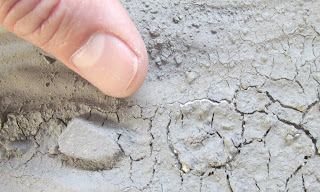Experimenting with creating "baked earth" effect

 Sometimes I reinvent the wheel, like when I make my cracked dirt look. This time I am recording exactly how I did it and how it came out with each slightly different approach. This effect is neat next to a river or creek to show how it swelled during a winter flood and then the waters receded leaving a neat "Parched" look.
Sometimes I reinvent the wheel, like when I make my cracked dirt look. This time I am recording exactly how I did it and how it came out with each slightly different approach. This effect is neat next to a river or creek to show how it swelled during a winter flood and then the waters receded leaving a neat "Parched" look.